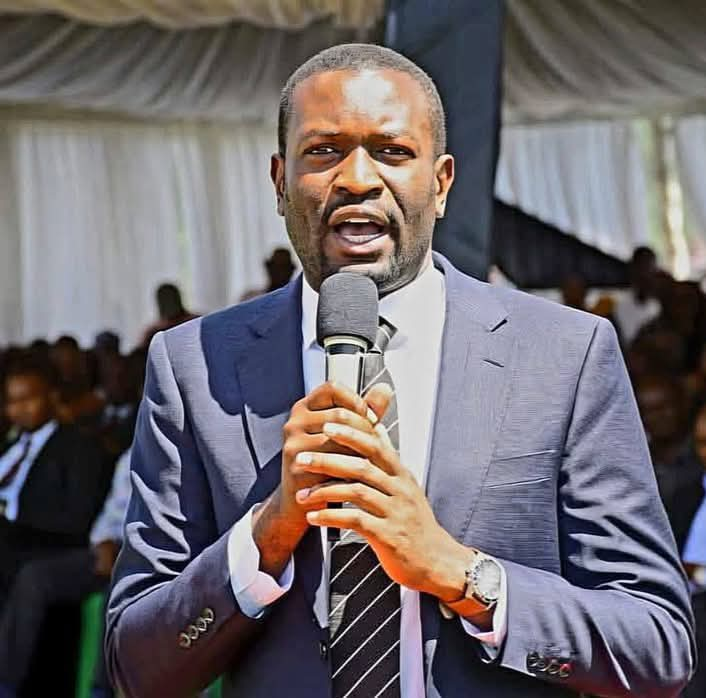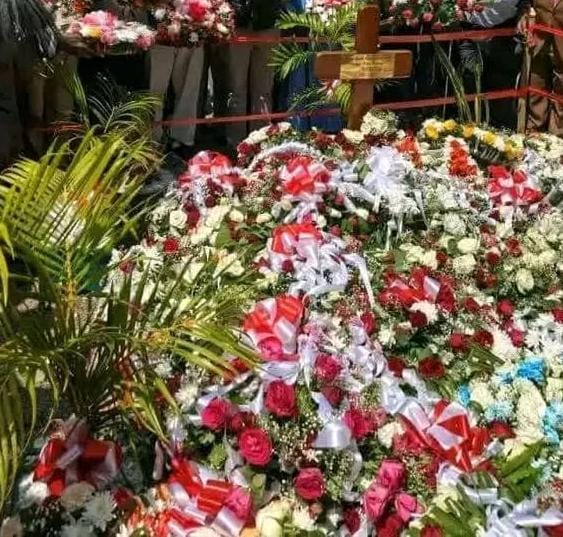Sifuna’s Vindication
By James Okoth
At Raila Odinga’s burial in Bondo, what was meant to be a solemn farewell quickly turned into a political declaration. Speaker after speaker from the ODM hierarchy praised President William Ruto, pledging to work with him “until 2032” in what they termed as the continuation of Raila’s vision for a “broad-based government.” Their tone suggested that ODM’s path forward was firmly tied to Ruto’s administration.
Governor Gladys Wanga, among others, led the charge, declaring that “Baba left us in broad-based, and in broad-based we shall remain.” Her message, echoed by several senior party figures, implied that Raila’s final political gesture, cooperation with Ruto, was meant to be long-term, if not permanent. The rhetoric from the dais painted a picture of a new political alignment, one that blurred the lines between the ruling UDA and the opposition ODM.
President William Ruto, as if confirming a permanent ODM–UDA pact, took his entire time to passionately popularise and speak about ODM without ever mentioning UDA in his speech. The President, in more than one occasion, declared the popular ODM slogan, “ODM!” as the mammoth of crowd roared back, “Tuko tayari!”
But when Edwin Sifuna rose to speak, the atmosphere changed. His speech, though brief, was firm, unshaken and unapologetic. “Raila Odinga did not say that ODM will support President Ruto until 2032,” he declared, his voice cutting through the murmurs. “He called for peace and dialogue, not surrender. ODM remains a political party with its own vision and will have a presidential candidate in 2027.”
It was the least applauded and most uncomfortable speech of the day. For many ODM loyalists, Sifuna’s words sounded like defiance in a moment of unity. For others, they were a much-needed reminder that Raila’s legacy was not to be misused for political convenience.
What followed was a storm. Party insiders close to the government branded Sifuna a hardliner. Social media attacks poured in from both camps — those accusing him of sabotaging ODM’s new relationship with Ruto and others claiming he was simply out of touch with reality. His insistence that the broad-based arrangement was a “political ceasefire, not a permanent merger” drew criticism from colleagues who viewed him as an obstacle to access and influence within government.
Yet, Sifuna held his ground.
As Secretary-General, he continued to defend ODM’s independence, often reminding the public that Raila Odinga had never declared ODM defunct or merged. Instead, he said, Raila’s intention was to ease political tensions after a divisive election — not to erase party boundaries.
Days later, during the ODM Central Committee meeting on October 27, 2025, his position was vindicated. The party’s official statement, read by Sifuna himself, settled the matter.
“We reiterate the commitment of the Party to the broad-based government until 2027, a relationship guided by the ten-point agenda entered into for the sake of peace and stability of the Country,” read Sifuna, flanked by the newly confirmed party leader, Oburu Oginga, Homa Bay Governor Gladys Wanga and other party top brass.
The inclusion of the words “until 2027” was deliberate and powerful. It signalled a return to political clarity that ODM’s cooperation with UDA was temporary, issue-based and rooted in Raila’s peace legacy, not in long-term political surrender.
For leaders like Gladys Wanga, who had earlier pledged allegiance to Ruto beyond 2027, the statement was a quiet but firm correction. It made clear that ODM was not folding into the ruling coalition, but rather engaging within a framework defined by principle and time limits. The so-called “handshake spirit” had an expiry date and it wasn’t 2032.
This outcome reshapes the post-Raila political landscape. It clarifies that while ODM honours Raila’s commitment to national unity, it will not mortgage its political future. The broad-based government remains a ceasefire, not a merger. Standing at the centre of this renewed identity is Edwin Sifuna, now seen by many as the voice of ideological integrity within the party.
Sifuna’s vindication carries profound implications. It cements him as a man of conviction, someone who read Raila’s message beyond the noise of politics. His insistence on principle over expedience restores a sense of direction to a party struggling to find footing after its founder’s passing.
Politically, the moment elevates Sifuna’s standing within ODM. Once seen merely as a loyal administrator and fiery spokesperson, he now emerges as a potential successor to Raila’s moral authority. His ability to navigate between maintaining dialogue with the government while asserting party independence positions him as a bridge between Raila’s old guard and the younger generation yearning for ideological renewal.
The road ahead, however, will not be smooth. Those who had aligned themselves with Ruto’s government for political advantage are unlikely to retreat quietly. ODM’s internal power struggle will continue to simmer beneath the surface, with Sifuna expected to face resistance from governors, MPs and strategists who benefit from the current détente. Still, the October 27 declaration has tilted the balance of legitimacy in his favour.
For ODM, the reaffirmation of independence offers both relief and challenge. Relief, because it finally resolves the confusion that followed Raila’s passing — a confusion that had blurred the line between cooperation and capitulation. Challenge, because the party must now rebuild its political machinery, redefine its message and prepare for a competitive 2027 contest without the magnetic force of Raila’s personal influence.
In the broader national context, the ODM–UDA statement is a signal to Kenya’s political class that the “broad-based” experiment has limits. It shows that dialogue and peacebuilding need not translate into political absorption. For a country fatigued by endless mergers and betrayals, ODM’s decision revives the idea of loyal opposition, which is a crucial pillar of democracy.
Sifuna’s political future, meanwhile, looks brighter than ever. His vindication gives him credibility that no internal election or appointment could offer. Within ODM circles, he now carries the moral weight of a man who stood for the party’s identity when others wavered. Among younger politicians, he represents a fresh brand of leadership — assertive, intellectual and uncompromising on principle.
If ODM is to reinvent itself for the post-Raila era, it will need leaders like Sifuna, grounded in ideology, fluent in modern politics and unafraid to challenge power even from within. His newfound stature could see him play a pivotal role in shaping ODM’s 2027 strategy, or even in defining the succession matrix itself.
Ultimately, the October 27 meeting was more than a party gathering; it was a reckoning. It reaffirmed that ODM still belongs to its members, not to convenience. It reminded Kenyans that peace is not the same as submission and that Raila’s legacy was built on courage and not compliance.
Edwin Sifuna’s journey from being the least applauded speaker at Raila’s burial to the most vindicated voice in ODM is a testament to political consistency in a season of confusion. He stood for clarity when others sought comfort. Today, his words have become party doctrine.
ODM lives on. The ceasefire holds. The merger dies. From Raila’s long shadow, a new leader begins to rise… Edwin Sifuna.



